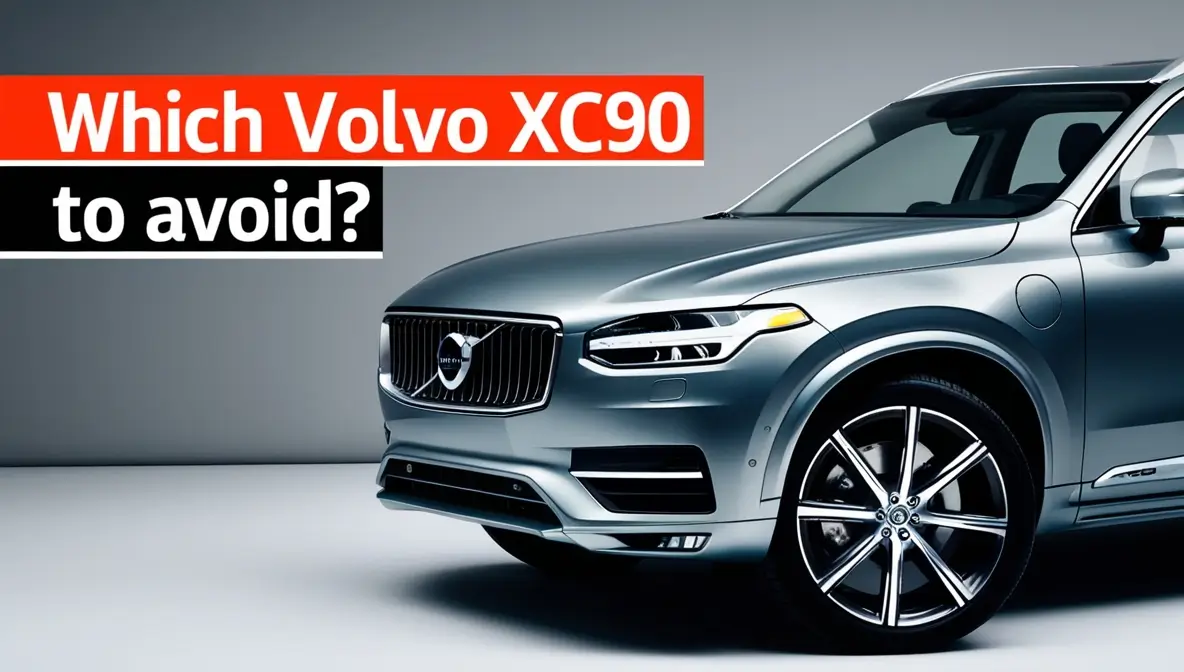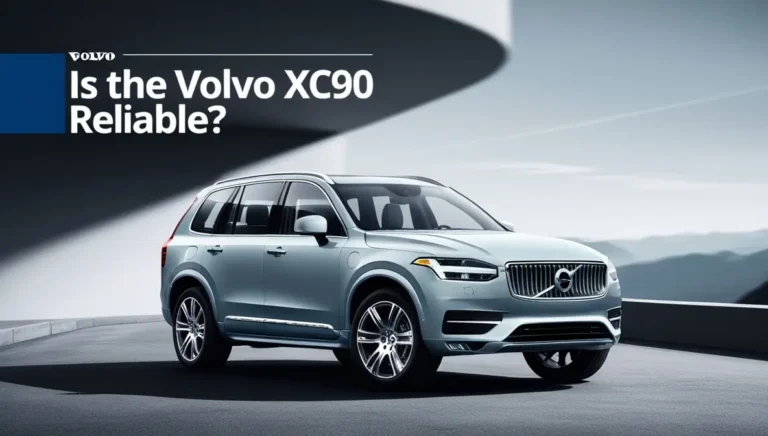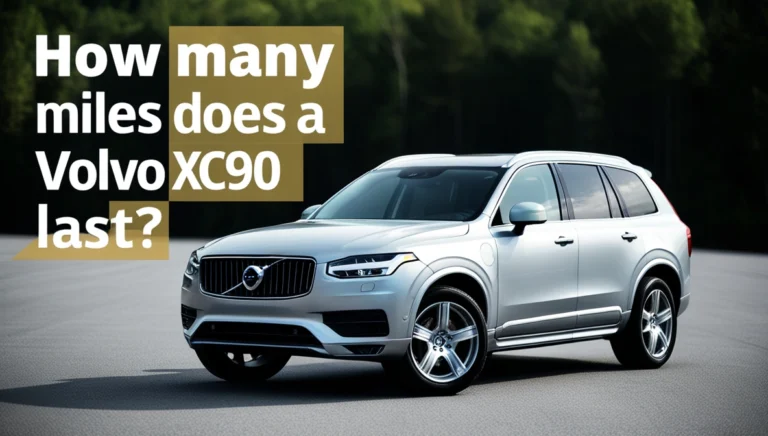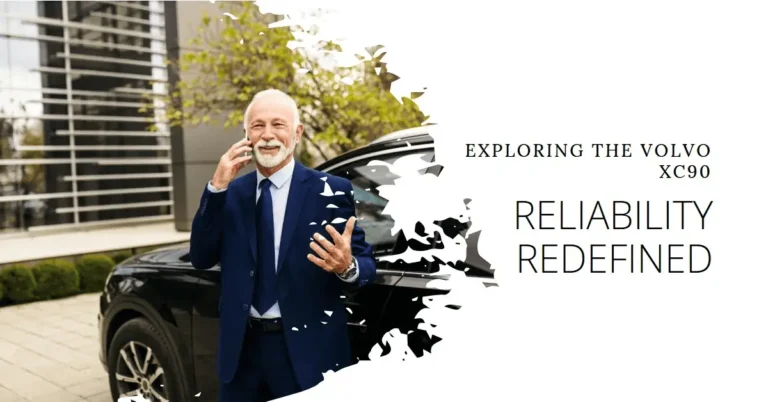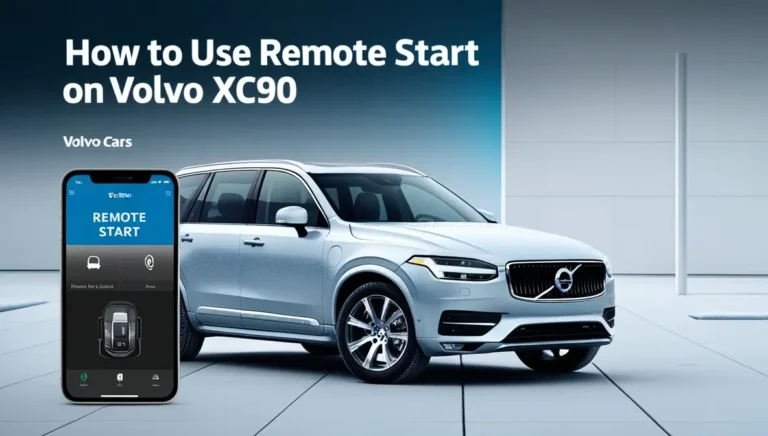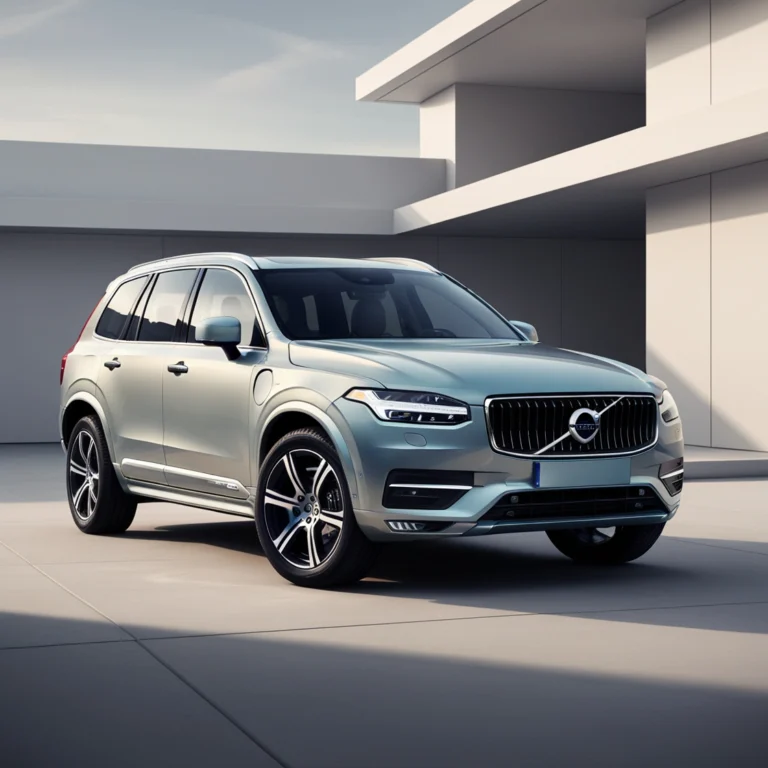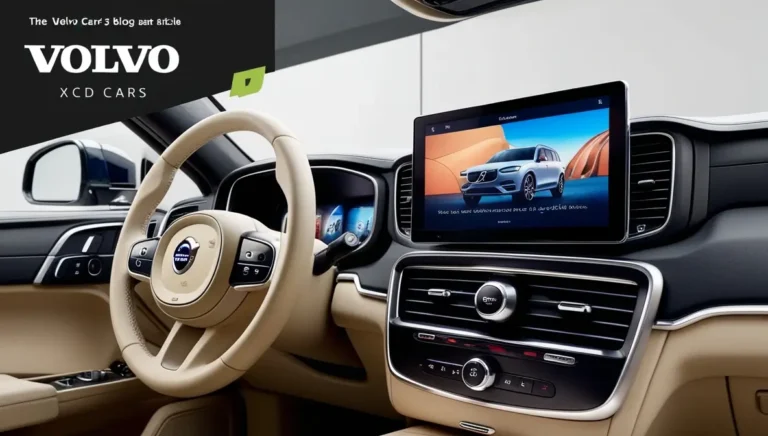Which Volvo XC90 to Avoid: A Detailed Guide for Buyers
Ever had that sinking feeling when your “dream car” turns into a money pit? Well, buckle up because we’re about to take a wild ride through the world of Volvo XC90s – the good, the bad, and the “oh no, not again” models. If you’re eyeing one of these Swedish beauties, you’ll want to stick around. Trust me, this guide might just save you from some serious buyer’s remorse!
So, which Volvo XC90 should you avoid? In a nutshell, steer clear of the early models from 2004-2007, especially the 2004 and 2005 versions. These years are known for transmission nightmares and engine hiccups that’ll have you on a first-name basis with your mechanic. Oh, and don’t forget the 2016 model – it’s like that one relative who shows up uninvited and causes chaos. But don’t worry, we’ll dig into all the juicy details soon enough!
Overview of the Volvo XC90
Introduction to the Volvo XC90
Picture this: It’s the early 2000s. Low-rise jeans are in, flip phones are cool, and Volvo decides to shake things up by introducing the XC90. This wasn’t just any SUV – it was Volvo’s first crack at the luxury SUV market, and boy, did it make a splash!
The XC90 rolled onto the scene in 2002, turning heads with its sleek Scandinavian design and promising to be the perfect mix of safety, luxury, and family-friendliness. It was like the responsible adult at the party but the one who still knew how to have fun. Over the years, it’s gone through more facelifts than a Hollywood celebrity, each time trying to perfect that balance of style, comfort, and “please don’t break down on me now” reliability.
From its boxy beginnings to the more voluptuous current models, the XC90 has always been a popular choice for those who want a bit of everything. Safety features? Check. Room for the kids, the dog, and that impulse buy from IKEA? Double-check. A touch of luxury that says, “I’ve made it, but I’m not shouting about it”? You bet!
Importance of Choosing the Right Model Year
Now, here’s where things get tricky. Choosing the right XC90 is like picking the perfect avocado – get it right, and it’s a smooth, creamy dream. Get it wrong, and you’re in for a world of disappointment (and possibly a hefty repair bill).
Different model years of the XC90 are about as consistent as a toddler’s mood swings. Some years later, Volvo knocked it out of the park. Other years? Let’s just say they probably wish they could get a do-over. That’s why knowing which years to avoid is crucial – unless you enjoy surprise mechanic visits and impromptu car shopping.
The thing is, car manufacturers sometimes use early model years as guinea pigs. They throw in new tech, tweak the design, and cross their fingers, hoping everything works out. Spoiler alert: it doesn’t always go as planned. That’s why savvy buyers know to wait a year or two after a major redesign before jumping in. It gives the manufacturer time to iron out the kinks – like waiting for the second batch of cookies to come out of the oven. The first batch might be a bit… crispy.
Volvo XC90 Years to Avoid
Early Models (2004-2007)
Alright, grab your hard hat because we’re about to dive into the construction zone of early XC90 models. These first-generation beauties had all the promise of a superhero origin story but sometimes ended up more like a cautionary tale.
The 2004-2007 XC90s were Volvo’s first rodeo in the luxury SUV world. Like a rookie chef experimenting in the kitchen, they threw in all the ingredients they thought would work. The result? A mixed bag of triumphs and “oops” moments, with some owners cheering and others reaching for the aspirin.
These early birds caught more than worms – they also caught a fair share of issues, From transmission tantrums to electrical gremlins that seemed to have a mind of their own; owning one of these could sometimes feel like adopting a temperamental cat. You never quite knew what mood it would be when you turned the key.
It wasn’t all doom and gloom. These models laid the groundwork for future improvements. Think of them as the rough draft before the bestseller – necessary, but maybe not what you want on your bookshelf.
2004 Volvo XC90
Oh, 2004 XC90, where do we begin? This model year was like that friend who’s great in small doses but becomes a handful if you spend too much time together. Let’s break it down, shall we?
First up is the transmission. If cars could talk, the 2004 XC90’s transmission would probably say, “I quit!” faster than a disgruntled fast-food worker. Many owners faced premature transmission failures, turning their luxury SUV dreams into a mechanic’s nightmare. It was like watching a swan gracefully glide across a lake, only to start paddling frantically underwater suddenly.
But wait, there’s more! The engine and electrical issues were like uninvited guests at a party – they showed up unexpectedly and refused to leave. The check engine light became less of a warning and more of a constant companion, like that one streetlight that always seems to be on no matter the time of day.
Now, let’s talk money. Owning a 2004 XC90 could sometimes feel like you were single-handedly funding your mechanic’s vacation home. Repair costs? You might consider taking up a side hustle if you’re eyeing one of these models. It’s not uncommon for transmission repairs to cost more than a semester of college tuition. And long-term reliability? Well, let’s just say it’s about as predictable as the weather in April.
It wasn’t all bad. The 2004 XC90 taught us valuable life lessons, like the importance of research before making big purchases, and how to become best friends with your local tow truck driver. Silver linings, right?
2005 Volvo XC90
Ah, the 2005 XC90 – Volvo’s sophomore effort in the XC90 lineup. You know how they say the second album is always the toughest? Well, Volvo might agree with this model year. Let’s dive into this Swedish meatball of automotive quirks, shall we?
First things first – the transmission. Remember those issues from 2004? They decided to stick around like that one party guest who doesn’t get the hint when everyone else has left. Many 2005 XC90 owners played a not-so-fun game of “Will it shift or won’t it?” It’s like Volvo took the “If it ain’t broke, don’t fix it” saying and applied it to something that was, in fact, quite broken.
But wait, there’s more! As these cars racked up the miles, they started to show their true colours – and by colours, I mean check engine lights. Engine problems began popping up like whack-a-moles at higher mileages. It was as if the engine decided, “You know what? I’m tired of being reliable. Let’s spice things up a bit!”
And just when you thought you were in the clear, the audio and climate control systems decided to join the party of unpredictability. Imagine driving on a hot summer day, and suddenly, your AC decides it’s a heater. Or your radio starts channelling its inner rebellious teenager and refuses to work. It’s like the car equivalent of “You can’t tell me what to do; you’re not my real dad!”
It wasn’t all doom and gloom. The 2005 XC90 taught many owners valuable life skills – like how to sweet-talk a car into starting on a cold morning or how to explain to your kids that, yes, we’re taking another “adventure” to the mechanic. It’s all about perspective, right?
2006 Volvo XC90
The 2006 Volvo XC90 – ah, the middle child of the early XC90 family. Do you know how middle children sometimes feel caught between two worlds? Well, this model year seems to have taken that concept to heart. Let’s unpack this Swedish smorgasbord of automotive quirks, shall we?
First up, the dynamic duo of trouble: engine and transmission issues. These two systems got together and said, “Hey, remember how we caused headaches in the previous years? Let’s keep that tradition alive!” Many owners found themselves dealing with persistent problems that felt like a bad case of automotive déjà vu. It’s as if Volvo took the “practice makes perfect” motto and decided to keep practising… just without the perfect part.
But wait, there’s more! The 2006 model decided to spice things up by introducing new electrical problems. Battery drain became a common complaint – it’s like the car developed a sudden vampire-like thirst for electricity. Owners would go to start their cars in the morning, only to find them as responsive as a teenager being asked to do chores. “Sorry, can’t start right now. Too busy draining the battery for no apparent reason!”
Now, let’s talk money – owning a 2006 XC90 could sometimes feel like you were playing a very expensive game of automotive roulette. Major repairs, especially for the engine and transmission, could cost enough to make you consider taking up a lucrative side hustle. We’re talking about the “maybe I should start a YouTube channel about my car problems” kind of expenses.
But it wasn’t all bad news. The 2006 XC90 taught many owners valuable life lessons – like the importance of having a good relationship with your mechanic or explaining to your friends why you always need a ride. It’s all about personal growth, right?
2007 Volvo XC90
Alright, buckle up, buttercup, because we’re about to ride through the quirky world of the 2007 Volvo XC90. This model year is like that friend who’s almost got their act together, but still manages to surprise you with their antics. Let’s dive in, shall we?
First, the good news: the transmission issues that plagued earlier models started to show some improvement. It’s like Volvo finally remembered to oil the squeaky wheel. But hold your applause, folks, because “improvement” doesn’t mean “problem solved.” Some owners still played the transmission lottery, hoping their car wouldn’t decide to take an unscheduled vacation from shifting gears.
Now, let’s talk about a new player in the game of “What’s Wrong With My XC90?” – cooling fan defects. These little troublemakers could lead to power steering problems, turning your smooth luxury ride into an impromptu arm workout. Imagine trying to parallel park and suddenly feeling like you’re steering a truck from the 1950s. Talk about a blast from the past!
But wait, there’s more! The 2007 model was also subject to some recalls. It’s like Volvo was saying, “Oops, our bad. Can we have a do-over?” These recalls covered various issues, from potential fire hazards to airbag concerns. It makes you wonder if your car was assembled by a team of mischievous elves rather than Swedish engineers.
So, what’s a potential buyer to do? If you’re considering a 2007 XC90, you might want to channel your inner detective. Check that recall history as if you’re scrolling through your ex’s social media – thoroughly and with a healthy dose of scepticism. And remember, a good pre-purchase inspection is worth the weight in Swedish meatballs.
Despite its quirks, the 2007 XC90 wasn’t all bad. It was like that lovable rogue in a sitcom – frustrating at times, but you couldn’t help but root for it. Plus, it gave owners plenty of conversation starters at parties. “You won’t believe what my car did this week…”
Second Generation Pitfalls: 2016 Volvo XC90
Why the 2016 Model is Problematic
Alright, folks, fasten your seatbelts because we’re about to take a bumpy ride through the world of the 2016 Volvo XC90. This model year was supposed to be Volvo’s triumphant return to the luxury SUV scene – like a pop star’s comeback album. But much like some of those albums, it hit a few sour notes.
First up, let’s talk about the auto-braking system. This feature was meant to be your personal superhero, swooping in to save the day (and your bumper) when danger lurked. However, for some 2016 XC90 owners, it turned out to be more like that overzealous hall monitor from school – overreacting at the slightest provocation. Imagine cruising down the highway, minding your own business, when suddenly your car slams on the brakes because it mistook a shadow for an impending apocalypse. Talk about keeping you on your toes!
But wait, there’s more! Water leaks became an unexpected feature no one asked for. The 2016 XC90 decided to bring the car wash experience inside the cabin. Sunroof leaks, cabin leaks – you name it, water found a way. Some owners joked about installing an indoor fountain; others considered trading their floor mats for life rafts. It was not exactly the luxury experience Volvo aimed for unless they were going for a “submarine chic” vibe.
And just when you thought you were in the clear, the electrical gremlins decided to join the party. Battery failures became so common, some owners considered adding “amateur electrician” to their resumes. The audio system, apparently feeling left out, decided to act up, too. One day, it serenades you with crystal-clear sound; the next, it gives you the silent treatment like a moody teenager. It’s enough to make you want to bust out the old cassette player (if you can still find one).
It wasn’t all doom and gloom. The 2016 XC90 taught many owners valuable life skills – like interpreting Morse code through dashboard warning lights or explaining to their passengers that, yes, that puddle on the floor is a “feature,” not a bug. It’s all about perspective, right?
Cost of Repairs for 2016 Volvo XC90
Now, let’s talk business – or, in this case, Swedish kronor. Owning a 2016 XC90 could sometimes feel like you were single-handedly funding Sweden’s economy through repair costs. Let’s break it down, shall we?
First up, the brake system issues. Fixing these overzealous safety features could cost you more than a fancy dinner in Stockholm. We’re talking thousands of dollars in some cases. It’s like the car was trying to compensate for all those times it unnecessarily slammed on the brakes by slamming your wallet instead.
And those electrical gremlins? They weren’t just annoying – they were expensive little buggers. Battery replacements, audio system repairs, and diagnosing mysterious electrical issues could add up faster than you can say “smörgåsbord.” Some owners joked that they should have majored in electrical engineering instead of whatever career path they chose – it might have been cheaper in the long run.
When you compare these repair costs to other mid-size luxury SUVs from the same year, the 2016 XC90 often came out looking like the high-maintenance friend in the group. While its competitors were sipping reasonably priced cocktails, the XC90 ordered top-shelf everything and expected you to pay the bill.
But here’s the kicker – despite all these issues, many owners still loved their XC90s. It’s like that one friend who’s always getting into trouble but is so charming you can’t help but stick around. The car’s style, comfort, and (when working properly) advanced features kept people coming back for more, even if their bank accounts were begging for mercy.
So, if you’re considering a 2016 XC90, maybe start a “just in case” repair fund. Or better yet, learn to love the quirks and consider each repair an “investment in character building.” After all, who doesn’t want a car with personality… and a penchant for draining your wallet?
Common Problems Across Multiple Years
Transmission Failures (2003-2011, 2013, 2016)
So, picture this: It’s 2003, and Volvo decides to introduce the XC90 with a transmission that’s about as reliable as a weather forecast in the tropics. Fast forward through 2011, with a surprise encore in 2013 and 2016, and you’ve got yourself a veritable greatest-hits album of transmission troubles.
The early years (2003-2006) were like the terrible twos of transmission tantrums. These models were notorious for transmission failures that could hit faster than you could say “Swedish meatballs.” We’re discussing issues that could pop up before you even finish paying off your car loan. Talk about a plot twist!
As we cruise into the later years of this troublesome era (2007-2011), things didn’t exactly get better – they just got… different. It’s like the transmission issues decided to play hide and seek. Some owners thought they’d dodged a bullet, only to face problems as their cars aged. It was like a game of automotive Russian roulette, but instead of a bang, you got a very expensive “clunk.”
You might be thinking, “Surely, by 2013 and 2016, they’d have figured this out, right?” Oh, sweet summer child. These years were like the unexpected sequel nobody asked for. Just when you thought it was safe to go back in the water (or in this case, the Volvo dealership), the transmission gremlins reared their ugly heads again.
So, what should you watch out for if you’re eyeing one of these models? Well, if your XC90 starts shifting gears with all the grace of a teenager learning to drive stick or suddenly decides that neutral is its new favourite gear, you might be in for a bumpy (and expensive) ride.
The real kicker? Fixing these issues often costs more than a fancy vacation. We’re discussing how “I could have toured Europe for this much” money. Some owners joked that they could have bought a small island nation for what they spent on transmission repairs. Okay, maybe not a nation, but at least it’s a nice beachfront property.
But here’s the thing – despite all these issues, people still loved their XC90s. It’s like that one friend who’s always late and forgets your birthday but is so charming you can’t help but keep them around. The car’s style, comfort, and safety features kept people returning for more, even if their mechanics were on speed dial.
Engine Issues
Now, let’s rev up our discussion and talk about the heart of the beast – the engine. Because what’s a car without a little engine drama, right?
The high-mileage XC90s, especially those from 2004-2006, sometimes decided that reliability was overrated. It’s like these engines hit their mid-life crisis and decided to start acting out. We’re discussing issues that could make your wallet weep, and your mechanic rubs their hands with glee.
One common complaint was the dreaded timing belt failure. Picture this: You’re cruising along, feeling all fancy in your Volvo, when suddenly your engine decides it’s had enough and just… stops. It’s like it’s throwing a tantrum, saying, “I don’t wanna play anymore!” Instead of a time-out, you’re looking at a repair bill that could rival a small mortgage payment.
Then there were the oil leaks. During finals week, some XC90s developed a thirst for oil that rivalled a college student’s coffee addiction. You’d check the dipstick, thinking, “Didn’t I just fill this?” only to find it drier than a stand-up comedian’s wit. It’s like the engine was secretly moonlighting as an oil disposal service.
And let’s not forget about the cooling system issues. Some XC90s decided that maintaining a steady temperature was just too mainstream. Instead, they’d fluctuate between “Arctic tundra” and “surface of the sun,” leaving owners to play a constant game of “Is it about to overheat, or is it just messing with me?”
Now, for the million-dollar question (or, in this case, the several-thousand-dollar question): How much are we talking about for repairs? Let’s just say that if your XC90’s engine decides to go rogue, you might want to consider taking up a lucrative side hustle. We’re talking about repairs that could cost anywhere from “Ouch, that hurts” to “Do I really need both kidneys?”
The real kicker? These issues often cropped up just when you thought you were clear. The engine awaited the perfect dramatic moment to make its grand exit. You’d hit 100,000 miles, thinking you’ve got it made, only for the check engine light to flicker on like a mischievous firefly.
But here’s the thing – despite all these quirks, many XC90 owners remained loyal. It’s like Stockholm syndrome but for cars. They’d tell you, “Sure, it’s cost me a small fortune in repairs, but look how pretty it is!” And they’re not wrong. The XC90, even with its temperamental engine, still managed to turn heads and win hearts.
So, if you’re considering a high-mileage XC90, especially from those spicy 2004-2006 years, maybe brush up on your engine whispering skills. Or better yet, make friends with a really good mechanic. Trust me, you’ll be on a first-name basis before you know it.
Electronic and Climate Control Issues
Alright, buckle up because we’re about to take a wild ride through the wonderland of Volvo XC90’s electronic and climate control issues. It’s like a techno party, but instead of sick beats, you get… well, just sick of dealing with it.
Let’s start with the climate control system. You know how some people can never agree on the right temperature? Well, the XC90 decided to embody that spirit. One minute, you feel toasty warm; the next, you wonder if you accidentally hit the “Arctic Blast” button. The car is trying to prepare you for all four seasons in one commute.
Some owners reported that their AC decided to take an unscheduled vacation in the middle of summer. Nothing says “luxury vehicle” quite like showing up to a meeting looking like you just ran a marathon, right? And don’t even get me started on the heater issues in winter. Let’s just say some XC90 owners became very acquainted with the joys of layering.
But wait, there’s more! The audio system decided it wanted in on the fun, too. Imagine this: You’re cruising along, jamming to your favorite tunes, when suddenly – silence. No, it’s not because you hit a bad note during your spirited karaoke session. The audio system just decided it needed a break. Some owners joked that their XC90 was trying to tell them their music taste needed work.
And let’s not forget about those pesky electrical gremlins that seemed to pop up like whack-a-mole. Dashboard lights flickering like a disco? Check. Power windows with a mind of their own? You bet. It’s like the ghost of a mischievous electrician possessed the car.
Now, here’s where it gets interesting. In its infinite wisdom, Volvo tried to fix some of these issues with software updates. It’s like they thought, “Hey if it works for smartphones, why not for cars?” Sometimes, it worked, and owners rejoiced. Other times, let’s just say it was about as effective as trying to fix a leaky boat with a band-aid.
The real kicker? These issues didn’t discriminate. They could pop up in a brand new XC90 or wait to surprise you in an older model, like a badly timed jack-in-the-box. It kept owners on their toes, that’s for sure. You never knew if today would be a “everything works perfectly” day or a “why is my car doing its best impression of a Christmas tree” day.
But here’s the thing – despite all these quirks, many XC90 owners still loved their cars. It’s like they developed a Stockholm syndrome for vehicle electronics. They’d tell you, “Sure, sometimes I have to perform a ritual dance to get the AC to work, but look how nice the leather seats are!”
So, if you’re considering an XC90, maybe brush up on your tech skills. You might be qualified to work at the Genius Bar after a few months of ownership. And hey, at least you’ll always have something interesting to discuss at dinner parties, right?
What to Look for When Buying a Used Volvo XC90
Key Factors to Consider Before Purchase
Alright, future XC90 owner, let’s talk shop. Buying a used Volvo XC90 is like online dating – you need to do your homework, or you might have a few unwelcome surprises. So, grab your detective hat, and let’s dive into the key factors you should consider before swiping right on that shiny Swedish SUV.
First things first – recalls. Oh boy, recalls. It’s like the automotive equivalent of finding out your potential date has a “complicated” relationship history. Especially for models like the 2007 XC90, checking for recalls is crucial. It’s not just about being cautious; it’s about ensuring your future car isn’t harbouring any dark secrets. You can check for recalls faster than you can say “smörgåsbord” on the National Highway Traffic Safety Administration (NHTSA) website. Just punch in the Vehicle Identification Number (VIN), and voilà – instant background check!
Now, let’s talk about the vehicle’s maintenance history. This is like scrolling through someone’s social media before a first date – you want to know what you’re getting into. A well-maintained XC90 is like finding out your date volunteers at animal shelters in their spare time – it’s a good sign. Look for regular oil changes, timely belt replacements, and major repairs. You might want to think twice if the maintenance history is spottier than a dalmatian.
But wait, there’s more! Pay special attention to those problem areas we chatted about earlier. Transmission issues? Check. Engine quirks? Double-check. Electronic gremlins? Triple-check with a cherry on top. It’s like playing automotive bingo, but instead of yelling “Bingo!” you’re trying to avoid shouting “Lemon!”
And here’s a pro tip: Get that XC90 checked out by a mechanic who knows Volvos. It’s like bringing a Swedish translator to your first date with a Swede – they’ll understand all the nuances you might miss. They can spot potential issues faster than you say, “Ikea meatballs.”
Oh, and don’t forget to take it for a test drive. This is your chance to see if you and the XC90 click. Does it handle like a dream or more like a nightmare? Does the AC blow cold air or just hot air (like some of your ex-dates)? This is your time to be picky – after all, you’re potentially committing to a long-term relationship here.
Lastly, trust your gut. If something feels off, it probably is. It’s like that moment on a date when you realize they’ve been talking about their ex for the last 20 minutes – sometimes, you just know it’s not meant to be.
Buying a used XC90 doesn’t have to be a Swedish mystery novel. With a little detective work and some savvy questioning, you can find a gem that’ll make you the envy of the carpool lane. Just be prepared for a few quirks along the way – after all, that’s part of the charm of owning a Volvo, right?
Models to Prefer Over Avoided Years
Okay, aspiring Volvo owner, now that we’ve scared you with all the potential pitfalls, let’s talk about the good stuff. Believe it or not, some XC90 models are more reliable than a Swiss watch (or, should we say, a Swedish watch?).
If you’re looking to avoid playing Russian roulette with your car choice, aim for the XC90 models from 2011-2014. These years are like the golden era of the XC90s – the automotive equivalent of finding that perfect avocado at the grocery store. They’ve ironed out most of the kinks from earlier years, but they’re not so new that you need to sell a kidney to afford one.
The 2011-2014 models are like that friend who’s always dependable – they show up on time, don’t cause drama, and are always there when you need them. These years saw improvements in reliability across the board. The transmission issues that plagued earlier models? Mostly a thing of the past. Engine problems? Rarer than a unicorn sighting. Volvo finally got its act together and decided to make cars that spend more time on the road than in the shop.
If you’re feeling more adventurous (and your wallet is a bit more padded), the 2017-2020 models are worth a look. These are part of the second generation XC90s, and boy, did Volvo step up its game. It’s like they took all the lessons learned from the earlier years and created the XC90 2.0 – bigger, better, and less likely to make your mechanic’s kids’ college fund.
These newer models come with many safety features and technology improvements. We’re talking about cars that are so smart that they make your smartphone look like a flip phone from the ’90s. Advanced driver assistance systems, improved fuel efficiency, and interiors are so nice you might be tempted to live in your car (not recommended, but tempting nonetheless).
But here’s the cool part – the safety features. Volvo has always been known for its safety, but these newer models have taken it to a new level. It’s like having a personal bodyguard that is a comfortable SUV. Some of these cars can practically drive themselves (again, not recommended, but impressive).
Now, I know what you’re thinking – “But what about those 2016 models you were ranting about earlier?” Well, sometimes even the best of us have an off year. It’s like that one haircut you got in high school that you prefer not to discuss. The 2016 model had its issues, but Volvo quickly got back on track in the following years.
So, if you’re in the market for an XC90, these are the years to watch. They offer the best balance of reliability, features, and undeniable Volvo charm. Remember, even the best years can have quirks – it’s part of the Volvo experience. It’s like adopting a fancy, really expensive Swedish pet. Sure, it might have its moments, but you’ll love it at the end of the day anyway.
And hey, if you do end up with one of these preferred models, don’t forget to give it a name. I hear “Sven” is popular among Volvo enthusiasts. Just a thought!
Frequently Asked Questions About the Volvo XC90
How Long Does a Volvo XC90 Last?
Ah, the million-dollar question (or, should we say, the multi-thousand-dollar question?). How long does a Volvo XC90 last? Buckle up because the answer is as straightforward as a Swedish furniture assembly manual.
In theory, with proper care and maintenance, a Volvo XC90 can last as long as… well, as long as you’re willing to keep it running. It’s like that energizer bunny but with better seat warmers. Many XC90 owners report their vehicles hitting the 200,000-mile mark and still going strong. It’s like the car equivalent of those who run marathons in their 80s – impressive, slightly baffling, but possible.
But here’s the catch – and there’s always a catch, right? – the key phrase here is “proper care and maintenance.” Treating your XC90 like it’s invincible will remind you quickly (and expensively) that it’s not. It’s like any long-term relationship – it needs attention, care, and the occasional expensive gift (in this case, replacement parts) to keep things running smoothly.
Regular oil changes are a must. Think of it as giving your XC90 a spa day – it keeps everything running smoothly and prevents unnecessary wear and tear. Ignoring this is like never washing your face – eventually, things will get ugly.
Timing belt replacements are another biggie, especially for older models. If you miss this, your engine might call it quits faster than you can say, “Swedish meatballs.” It’s like forgetting your anniversary – the consequences can be dire and expensive.
And let’s not forget about those transmission services. Neglect these, and your XC90 might start shifting gears with all the grace of a teenager learning to drive a stick for the first time. It’s not pretty and not good for longevity.
But here’s the thing – if you stay on top of these maintenance items, your XC90 could be your faithful road companion for many years. It’s like that friend who’s always up for a road trip, no matter how many miles you’ve travelled together.

